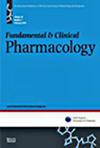Hydrogen Sulfide Treatment Enhanced Paclitaxel's Anticancer Effect on the ID8 Murine Epithelial Ovarian Cancer Cell Line
Abstract
Background
Paclitaxel is a potent agent against ovarian cancer. Hydrogen sulfide (H2S) is of particular interest in cancer treatment research. It is known that H2S has apoptotic and antiproliferative effects.
Objectives
We aimed to examine the potential effects of H2S donor NaHS and paclitaxel, both individually and when co-administered, on the ID8 murine epithelial ovarian cancer cell line.
Methods
We examined the effects of the co-administration of paclitaxel and NaHS on cell viability, cytotoxicity, reactive oxygen species (ROS) levels, mitochondrial membrane potential (MMP), apoptosis, and proliferation in the ID8 ovarian cancer cell line. 3-(4,5-Dimethylthiazol-2-yl)-2,5-diphenyltetrazolium bromide and lactate dehydrogenase tests were performed to ascertain the effect of NaHS and paclitaxel on cell viability and cytotoxicity. Caspase 3/7 levels were quantified in order to detect whether apoptosis is caspase dependent. Quantitative real-time polymerase chain reaction (qPCR) method was used to ascertain relative mRNA levels of Bcl-2, Bcl-xL, Bax, and Bak genes.
Results
The viability of ID-8 cells showed a significant reduction following the co-administration of paclitaxel and NaHS, compared to the paclitaxel administration only. The results of qPCR analysis demonstrated significant alterations in the Bcl-2, Bcl-xL, Bax, Bak, Casp3, Casp8, and Casp9 genes' mRNA levels following cotreatment. In contrast to paclitaxel alone, its co-administration with NaHS resulted in increased apoptosis and decreased ROS levels. The presence of NaHS has been observed to enhance the apoptotic impact of paclitaxel by amplifying the decline in MMP.
Conclusion
These data indicate that co-administration of H2S with paclitaxel could be useful as a potential agent in the treatment of ovarian cancer. We found that the presence of H2S enhanced the antitumor efficacy of paclitaxel.

 求助内容:
求助内容: 应助结果提醒方式:
应助结果提醒方式:


